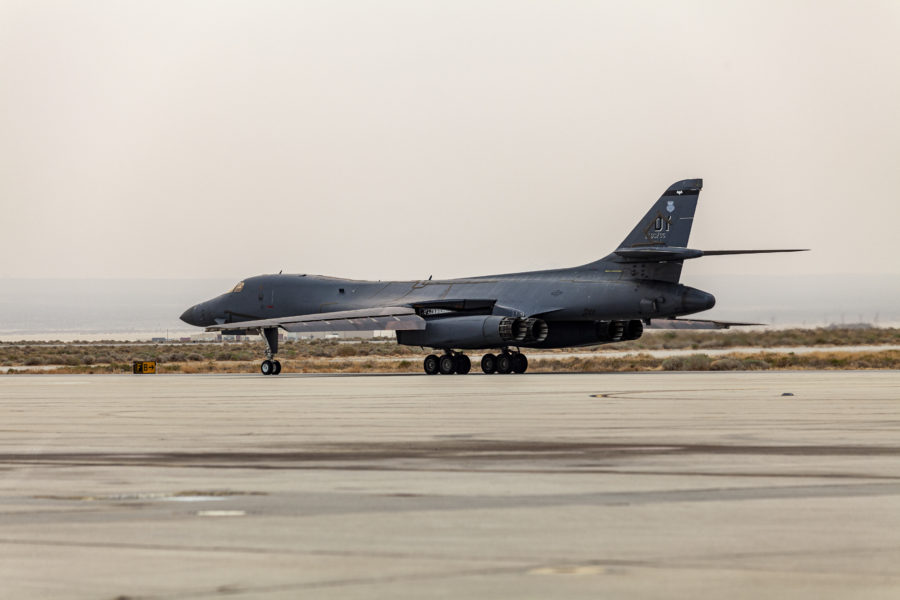Air Force Global Strike Command has retired the last of 17 B-1B bombers from its inventory, leaving a fleet of 45 aircraft that will serve until the new B-21 stealth bomber is ready for duty, the command announced.
“The last aircraft departed Edwards Air Force Base, Calif., to fly to the boneyard at Davis-Monthan Air Force Base, Ariz.,” on Sept. 23, an AFGSC spokesperson said. The divestiture supports the Air Force’s “efforts to modernize America’s bomber fleet” as authorized by Congress, he said. The plan was to accomplish the divestiture by the end of fiscal 2021, which ends next week.
The smaller fleet will allow the remaining aircraft to receive more attention, spare parts, and generally achieve a higher level of readiness, AFGSC’s Director of Logistics and Engineering Brig. Gen. Kenyon K. Bell said. The cost avoidance of operating the retired jets will also help pay for capability upgrades. The divestiture “was executed very smoothly,” he said.
Senior Air Force leaders at AFA’s Air, Space & Cyber Conference from Sept. 20 to 22 unanimously called on Congress to let the service divest other types of aircraft that are draining manpower and money away from new systems needed to deter or defeat China.
“The Air Force will not succeed against a well resourced and strategic competitor if we insist on keeping every legacy system we have,” service Secretary Frank Kendall said in his keynote speech.
The 17 B-1 bombers were retired from a fleet of 62, which the Air Force said had been overworked by long years of providing on-call air support to troops in Afghanistan and Iraq. Many of the aircraft had severe structural fatigue, especially at the wing-pivot points, because the jets were flying high and slow, instead of low and fast with wings swept, as they were designed to do.
“The aircraft we retired would have taken between $10 million and $30 million per aircraft to get back to a status quo fleet in the short term until the B-21 comes online,” Bell said.
Congress allowed the Air Force to divest the airplanes in last year’s National Defense Authorization Act.
Not all the airplanes went to the boneyard. One has been sent to Tinker Air Force Base, Okla., to serve as a prototype vehicle for test-fitting structural repairs, while another went to Edwards for ground testing. One will be torn down to create a digital twin at the National Institute for Aviation Research in Wichita, Kan., and still another went to Barksdale Air Force Base, La., to serve as a static display at the command’s museum. The digital twin will be used to develop structural repairs and capabilities improvements for the remainder of the fleet.
The remaining 13 aircraft are at the Davis-Monthan boneyard, where they will be in “Type 4000” storage. That means they’ll receive minimal protection—with latex spray on the engines and canopies—and be harvested for parts, but they will not be “recallable” from storage. Once everything of value is removed from them, the aircraft will be scrapped.
The Air Force has not said exactly when it plans to retire the remainder of the operational B-1B fleet. The service’s bomber roadmap from several years ago posited the B-1Bs phasing out in the 2031-2033 timeframe. The move hinges on the successful development and fielding of the Northrop Grumman B-21 Raider, the first five of which are under construction at the company’s Palmdale, Calif., facilities, Kendall said at Air, Space & Cyber. The first of those aircraft is expected to fly in mid-2022. The Air Force has not said whether it expects to retire the B-1B fleet one for one as the B-21s come online, although Air Combat Command chief Gen. Mark D. Kelly described the swap as a “hot handover” from one fully operational system to another.
